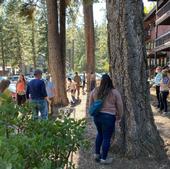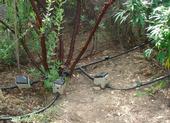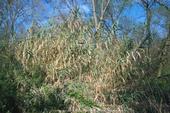- Author: Grace Dean

On this International Day of Forests, we at UC Cooperative Extension Forest Research and Outreach invite you to celebrate the future of California's trees with us. Considering the recent news coverage regarding tree mortality in California, we want to instead view this subject through a lens of hope. For it's not just the news outlets witnessing the extent of forest die-off: children, especially those in forested communities, are seeing the effects of drought, wildfire, and fire suppression policies in real time.
Project Learning Tree is a national education program leading the next generation to witness and then act on these changes. Children are the future of our forests, and we think the efforts of Project Learning Tree are a...
- Author: Zac Unger

A UC team tamps down fire danger and finds common ground
The summer of 2002 was a bad fire season in the United States. Twice as many acres burned than in 2001, and more total acres were destroyed than in all but one of the previous 40 years. The McNally Fire in Sequoia National Forest was only the second largest fire in California that year, and it alone cost more than $50 million to extinguish. It was against this smoky backdrop that George W. Bush launched the Healthy Forests Initiative, a wide-ranging plan to reduce the severity of western wildfires.
In California, the plan coalesced around the concept of...
- Author: Brenda Dawson

While the legality of California’s medical marijuana dispensaries is being debated in courtrooms, a UC Cooperative Extension forestry and wildlands ecology advisor says there are a number of issues related to the unregulated land-use practices of illicit cannabis growing that have not been addressed.
“As a forest ecologist, I spend a lot of time outdoors, and I talk to thousands of people every year about forest-related subject matter,” says Greg Giusti. “And you can’t talk to anybody today on the North Coast without the topic of cannabis growing and cannabis impacts on land coming up.”
In Lake and Mendocino counties, Giusti performs research and shares...
- Author: Chris M. Webb

In the early 1800s, European immigrants introduced the fast-growing giant reed arundo (Arundo donax) into California to use the canes for musical instruments. The plants were also used for erosion control and the reeds used for thatched roofing. However, it has since naturalized and become a serious pest in the state's natural waterways.
Arundo can grow at a rate of four inches per day and can reach heights of 30 feet. It reproduces and spreads when sections of the stem or root break off and float downstream.
Dense stands of arundo displace native riparian species. The plant requires a significant amount of water, reducing fish, wildlife and people. In addition, clumps of arundo and the soil around their roots...



